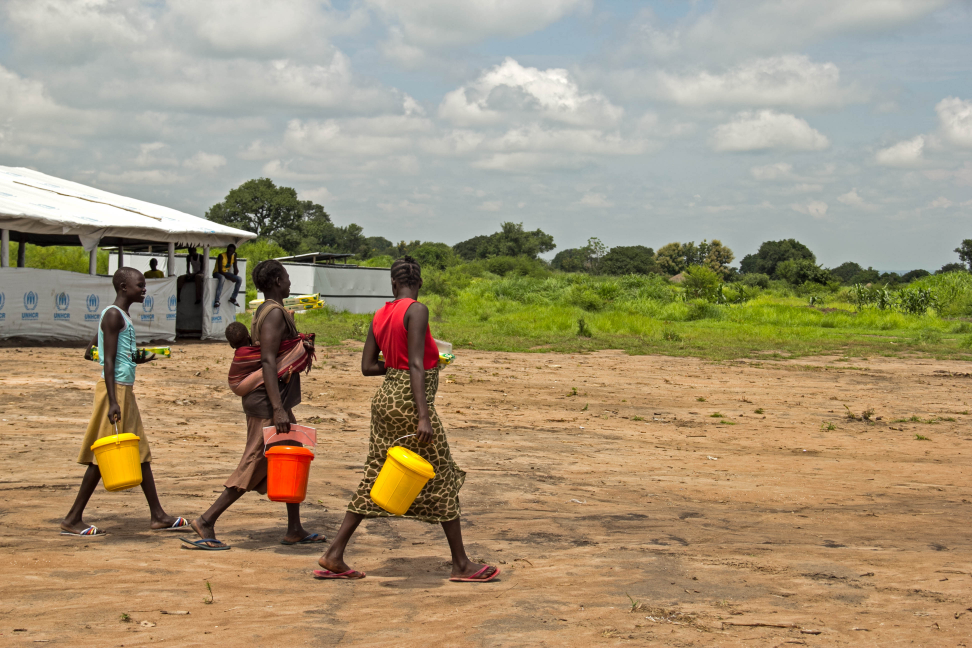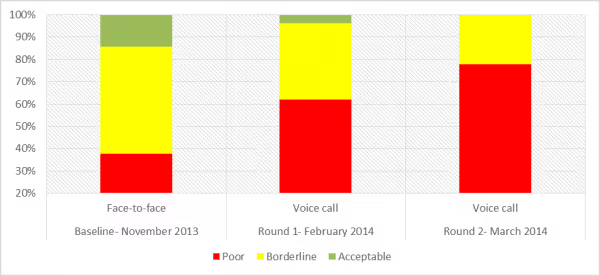Finding our voice: insights after two survey rounds

This post covers the results of our first phone survey rounds in Goma, as well as updates on response rates. Food consuption worsens in Mugunga 3 Camp as assistance is suspended.
The data shows that more households have become food insecure since our baseline survey began in November 2013. The dietary diversity of the households has declined—last November, IDPs were eating maize every day but during this February and March, it was rarely consumed. Furthermore, it appears that most households have switched to cassava.

We also monitor the type of coping strategies households use to ascertain whether people are having difficulties accessing food, through the reduced Coping Strategies Index (rCSI). A higher rCSI is indicative of vulnerability to food insecurity. As the graph below shows, the reduced Coping Strategies Index (rCSI) in the camp has been consistently high, in the mid-20s, in our baseline and two voice survey rounds. High rCSI values are commonly observed in the camps of DR Congo. The rCSI values we are observing are indicative of a poor food security situation. The rCSI values have been more stable than the food consumption score.

Overall, our phone surveys tell us that the food security situation in the camp is poor, as food assistance in the camp has been suspended. We were hoping to have a more positive story to tell with the first rounds of results. However, we have been able to share these results with the food security community. These findings were available for advocacy and debate, along with other, independent sources of information.
After our initial two rounds of calls, it is clear that phone surveys enable us to process and produce ‘hard’ household food security indicators in just a few days. This seems to be one of the key strengths of our approach.
Response rates are improving
As explained in our previous post, one of our main initial challenges has been ensuring that people pick up the phone and answer our calls. Early indications were that access to electricity was the main constraint for respondents, who tended to keep their phones switched off to spare their battery. We therefore set up a solar charging station in a central location in the camp, where respondents could re-charge their phones 3 days a week, free of charge.
It seems that efforts are paying off: we are pleased to see that our response rates are increasing, going from 40% in our January test calls to 45% in February to 67% in March. We still need to understand who the non-respondents are, and what impact that has on results. We will also continue monitoring response rates on a monthly basis.

Image sources: WFP
Stay updated
Sign up for our newsletter to receive regular updates on resources, news, and insights like this. Don’t miss out on important information that can help you stay informed and engaged.
Related articles
.png)


Explore Elrha
Learn more about our mission, the organisations we support, and the resources we provide to drive research and innovation in humanitarian response.